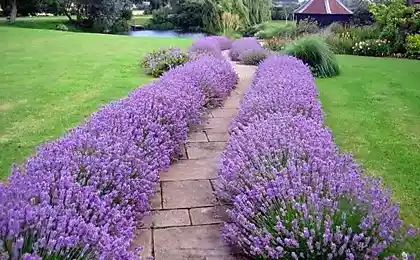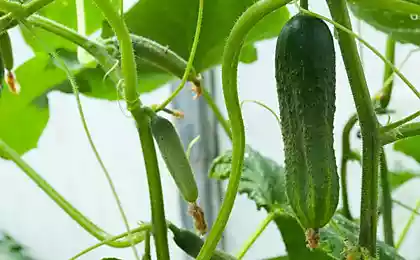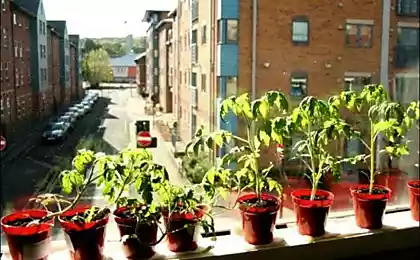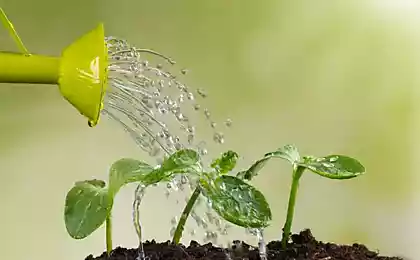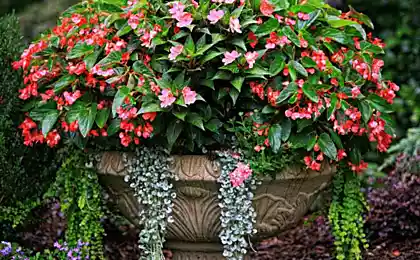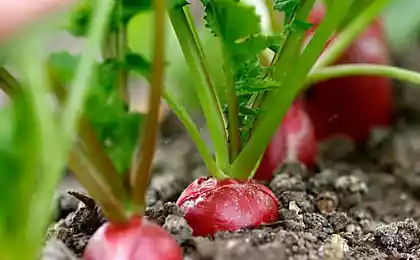549
How to grow lavender on the windowsill
Lavender appeals to many gardeners, but to grow it dare not all. Tell how to propagate the plant yourself, that you have a plot bloomed lavender shrubs.
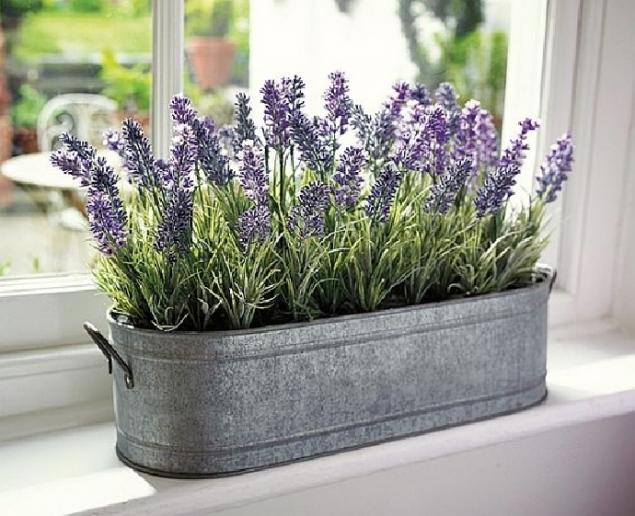
How to grow lavender from cuttings
What is the stalk of lavender? It's a piece of the top of the stem that are planted in soil to root. In fact, the "kids" lavender that have grown from cuttings represent clones of the parent plant and will look exactly the same as their "parent." This way you can propagate many plants. It is the cheapest and most effective.
All bright green "beams" on the branches of the lavender shoots this year. The branches can be cut for the cuttings to produce new instances of the plant. Some early spring the young shoots can be short, but allowed to grow lavender from a shoot last year, when they began to appear on new leaves. Don't worry, such instances also increase the good roots.
Step 1: cut the cuttings
Cut off a small lavender sprig with a length of about 6 cm Cut should be just below a leaf node – the point from which grows a leaf. It is best to carry out the procedure with a sharp knife. Scissors are not suitable for this, because they "pinch" the stems are the ducts, after which the cuttings rooted poorly.
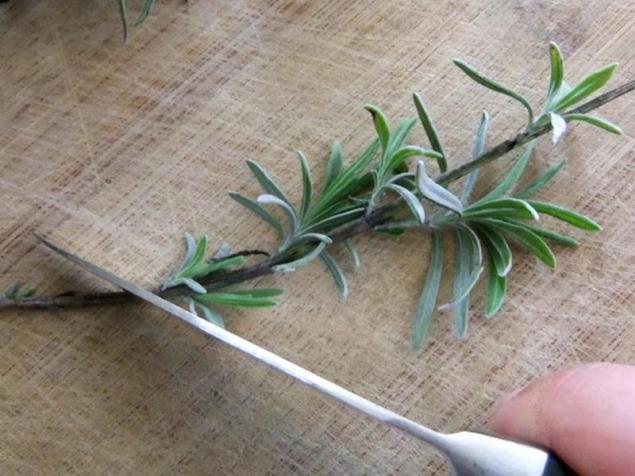
Step 2: remove leaves
Using the same knife that was used to cut off the stalks, remove the stem with all the leaves, also collected in the upper "beam". These leaves are needed to nourish the stalk. But if green is too much, the plant will spend all energy on her and not on building roots.
Step 3: plant the cuttings
Before planting cuttings of lavender advised dipping into the stimulator of root formation (e.g., Kornevin), and then planted them in pots, suglobov to the upper leaves. The substrate is best prepared from the universal soil (or compost) and perlite, taken in equal quantities.
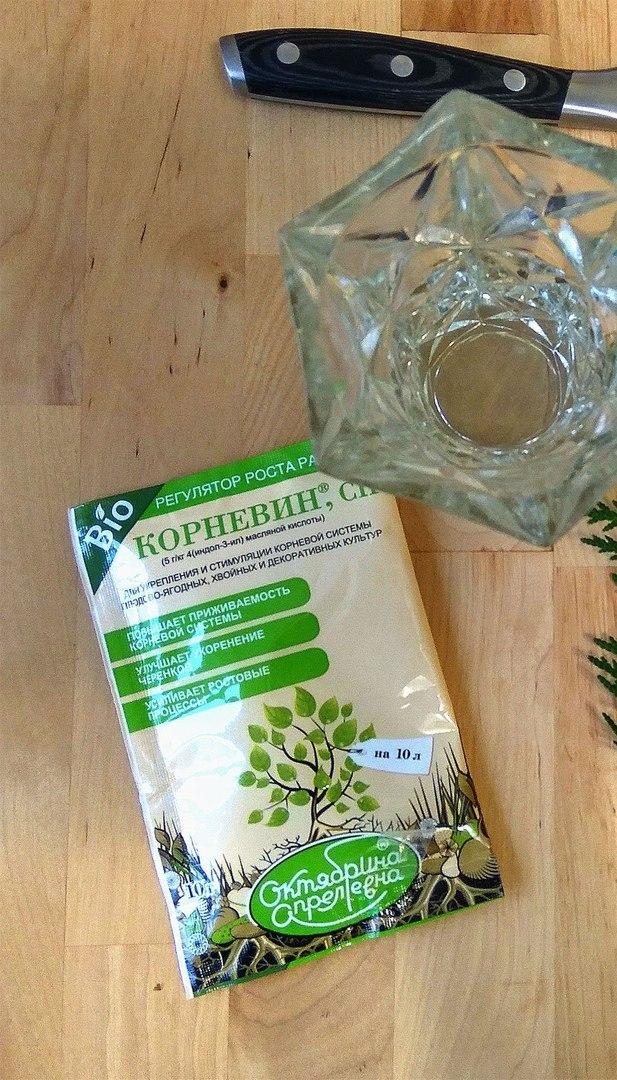
Drop off the cut twigs of lavender in the soil should be in the same condition as they were growing up. To turn the cuttings is not necessary, otherwise they will not survive.
As containers for small ceramic pots, unlike plastic, which is very badly passes air and moisture, the clay does not prevent the "breathing" of plants. A good air and moisture exchange is one of the main conditions for successful rooting of cuttings of lavender. In addition, in such an environment, decreases the likelihood of fungal diseases.
Step 4: wait for the rooting
After planting the cuttings of lavender should be watered. This should be done very carefully: lavender watered a little, as drying of the soil. Further, the pots must be covered with packs and put in a warm place (e.g. in a greenhouse or a Conservatory). Packages help to keep the cuttings around lavender heat and high humidity.
Rooted lavender for 4-6 weeks. Then plants can be put in individual pots. But first it is important to ensure that plants have actually emerged roots. Even if the lavender started to grow, still wait for the formation of roots.
Step 5: sit them in a separate container
Usually ready to transplant cuttings of lavender roots showing from the drainage holes. This is the signal to start action.
Now the young plants can be put in individual pots. Try not to choose containers for growth, because the roots of the young the lavender will not be able to master a large volume of soil and will grow weak and spindle-shaped. In plants with weak root system more prone to disease or bad adaptation to the transplant.
To get plants from containers, pots should be turned upside down, holding the upper part with his hand, and gently tap the bottom of the container. Seedlings of lavender along with a clod of earth should be in your hands. It is advisable to help yourself with sharp objects, inserting them into the drain hole to "push" the content – so you can injure the roots of the lavender.
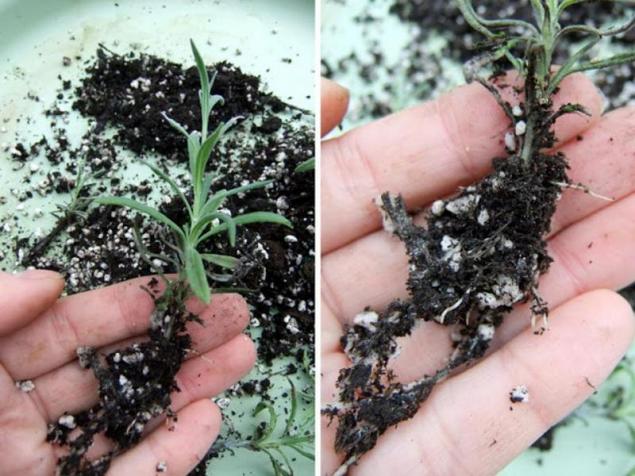
To plant young plant in the universal substrate in which it is still desirable to add a bit of vermiculite. Transplanted in a separate container seedlings do not need to contain the greenhouse. And fit more cool place. Packages also do not need: plants need a little bit to toughen up and get stronger.
When the roots of seedlings will learn the entire earth in their pots, the plants should be transplanted into larger containers. Even when the lavender is a little older, it can be planted in open ground.
Step 6: plant the lavender in open ground
When young seedlings of lavender reached the height of 8-10 cm, they can be planted in outdoor flower garden. Lavender likes slightly alkaline (6.5 to 8 pH) and well drained soil.published
Author: Yulia Pyatkova
P. S. And remember, only by changing their consumption — together we change the world! ©
Source: vk.com/wall-124849355?offset=160&own=1&w=wall-124849355_956

How to grow lavender from cuttings
What is the stalk of lavender? It's a piece of the top of the stem that are planted in soil to root. In fact, the "kids" lavender that have grown from cuttings represent clones of the parent plant and will look exactly the same as their "parent." This way you can propagate many plants. It is the cheapest and most effective.
All bright green "beams" on the branches of the lavender shoots this year. The branches can be cut for the cuttings to produce new instances of the plant. Some early spring the young shoots can be short, but allowed to grow lavender from a shoot last year, when they began to appear on new leaves. Don't worry, such instances also increase the good roots.
Step 1: cut the cuttings
Cut off a small lavender sprig with a length of about 6 cm Cut should be just below a leaf node – the point from which grows a leaf. It is best to carry out the procedure with a sharp knife. Scissors are not suitable for this, because they "pinch" the stems are the ducts, after which the cuttings rooted poorly.

Step 2: remove leaves
Using the same knife that was used to cut off the stalks, remove the stem with all the leaves, also collected in the upper "beam". These leaves are needed to nourish the stalk. But if green is too much, the plant will spend all energy on her and not on building roots.
Step 3: plant the cuttings
Before planting cuttings of lavender advised dipping into the stimulator of root formation (e.g., Kornevin), and then planted them in pots, suglobov to the upper leaves. The substrate is best prepared from the universal soil (or compost) and perlite, taken in equal quantities.

Drop off the cut twigs of lavender in the soil should be in the same condition as they were growing up. To turn the cuttings is not necessary, otherwise they will not survive.
As containers for small ceramic pots, unlike plastic, which is very badly passes air and moisture, the clay does not prevent the "breathing" of plants. A good air and moisture exchange is one of the main conditions for successful rooting of cuttings of lavender. In addition, in such an environment, decreases the likelihood of fungal diseases.
Step 4: wait for the rooting
After planting the cuttings of lavender should be watered. This should be done very carefully: lavender watered a little, as drying of the soil. Further, the pots must be covered with packs and put in a warm place (e.g. in a greenhouse or a Conservatory). Packages help to keep the cuttings around lavender heat and high humidity.
Rooted lavender for 4-6 weeks. Then plants can be put in individual pots. But first it is important to ensure that plants have actually emerged roots. Even if the lavender started to grow, still wait for the formation of roots.
Step 5: sit them in a separate container
Usually ready to transplant cuttings of lavender roots showing from the drainage holes. This is the signal to start action.
Now the young plants can be put in individual pots. Try not to choose containers for growth, because the roots of the young the lavender will not be able to master a large volume of soil and will grow weak and spindle-shaped. In plants with weak root system more prone to disease or bad adaptation to the transplant.
To get plants from containers, pots should be turned upside down, holding the upper part with his hand, and gently tap the bottom of the container. Seedlings of lavender along with a clod of earth should be in your hands. It is advisable to help yourself with sharp objects, inserting them into the drain hole to "push" the content – so you can injure the roots of the lavender.

To plant young plant in the universal substrate in which it is still desirable to add a bit of vermiculite. Transplanted in a separate container seedlings do not need to contain the greenhouse. And fit more cool place. Packages also do not need: plants need a little bit to toughen up and get stronger.
When the roots of seedlings will learn the entire earth in their pots, the plants should be transplanted into larger containers. Even when the lavender is a little older, it can be planted in open ground.
Step 6: plant the lavender in open ground
When young seedlings of lavender reached the height of 8-10 cm, they can be planted in outdoor flower garden. Lavender likes slightly alkaline (6.5 to 8 pH) and well drained soil.published
Author: Yulia Pyatkova
P. S. And remember, only by changing their consumption — together we change the world! ©
Source: vk.com/wall-124849355?offset=160&own=1&w=wall-124849355_956

